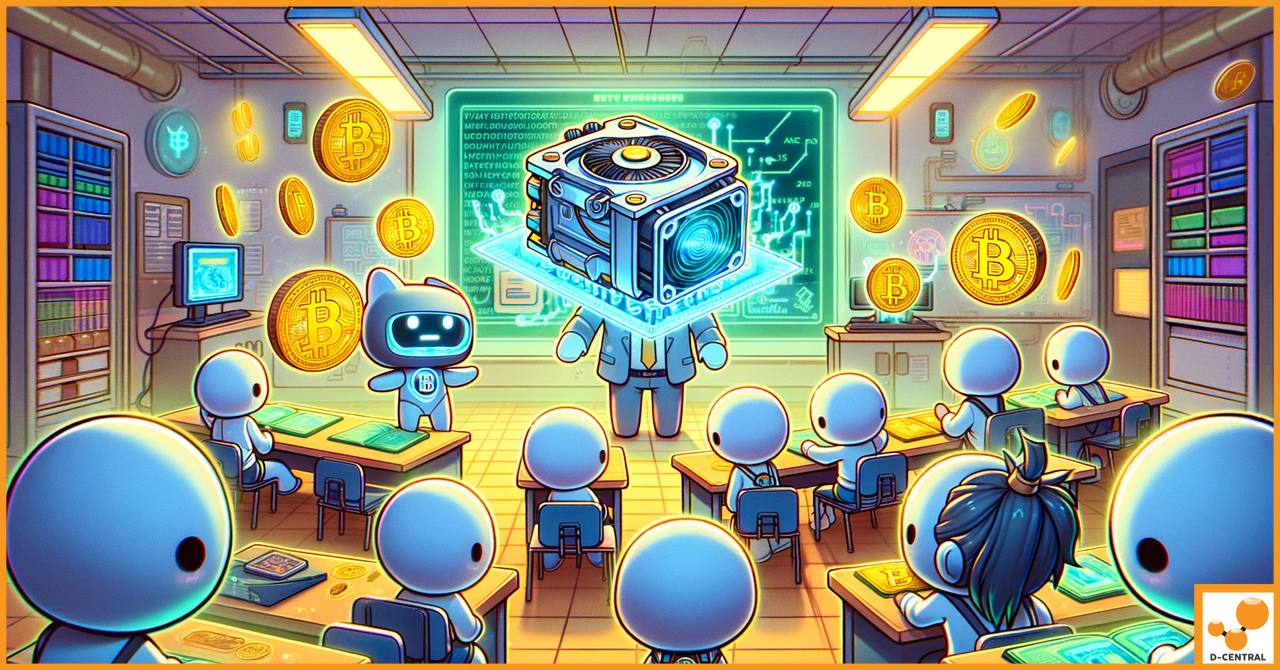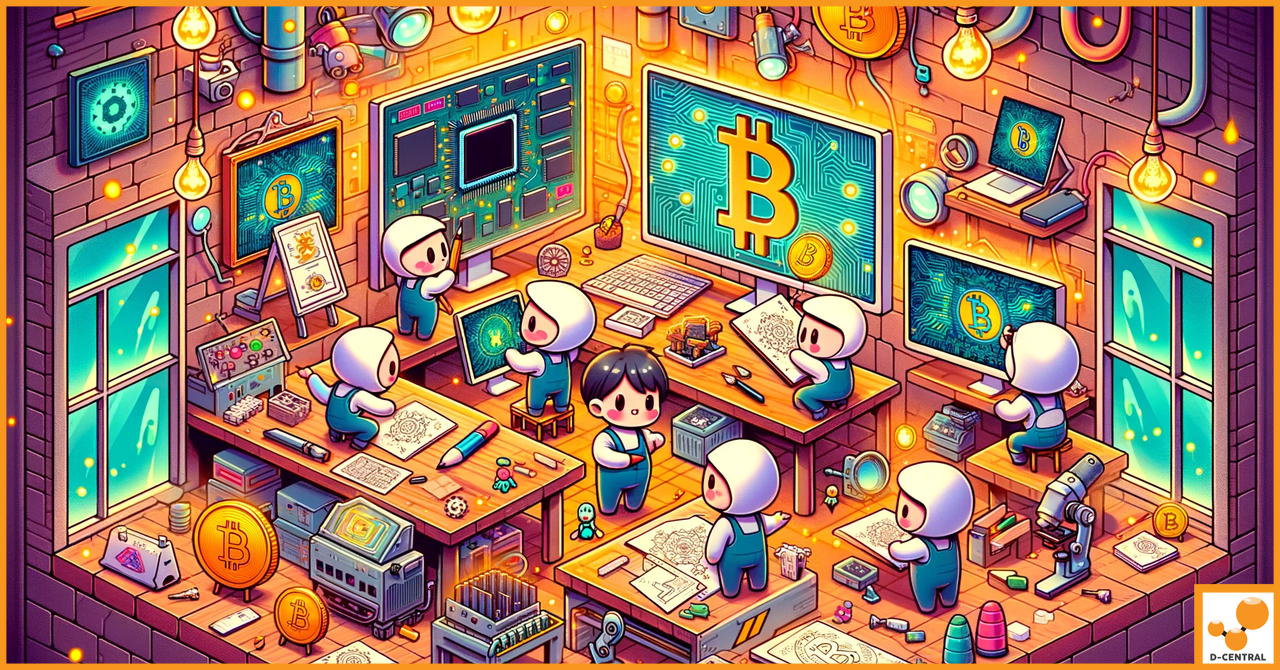
How to Solo Mine Bitcoin: The Ultimate Guide You Need to Know
Welcome to the comprehensive guide on solo Bitcoin mining! Whether you’re a seasoned miner looking to go independent or a
4479 Desserte Nord Autoroute 440, Laval, QC H7P 6E2

The Application-Specific Integrated Circuit (ASIC) miner industry stands as a cornerstone in the realm of cryptocurrency mining, a sector characterized by its rapid pace and relentless innovation. ASIC miners, designed exclusively for mining cryptocurrencies like Bitcoin, have revolutionized the mining landscape by delivering unparalleled efficiency and processing power. This specialized hardware has not only intensified the mining competition but also significantly increased the complexity and technicality involved in mining operations.
In this high-stakes environment, the ability to maintain and repair ASIC miners becomes paramount. The dynamic nature of the technology underlying these devices necessitates a commitment to continuous learning and adaptation. As new models emerge and existing ones evolve, staying abreast of the latest repair techniques and technological advancements is not just beneficial—it’s essential for anyone involved in the maintenance and operation of ASIC mining hardware.
The critical role of continuous learning in this industry cannot be overstated. With each advancement in ASIC technology, new challenges in repair and maintenance emerge. Repair technicians and mining operators must be agile learners, ready to adopt new strategies and tools to keep their mining operations running smoothly. This ongoing education ensures not only the longevity and efficiency of the mining hardware but also the competitiveness and profitability of the mining ventures themselves.
Moreover, the ASIC miner repair industry is more than just a technical field; it’s a community of innovators and problem-solvers. Staying updated with the latest repair techniques and technologies fosters a culture of knowledge sharing and collaboration, driving the industry forward. In this context, continuous learning is not just an individual pursuit but a collective endeavor that underpins the very foundation of cryptocurrency mining’s future.
As we delve deeper into the intricacies of ASIC miner repair and maintenance, we’ll explore the essential skills, advanced techniques, and innovative practices that define success in this ever-evolving industry. The journey through the world of ASIC miner repair is one of constant discovery and adaptation, where the pursuit of knowledge becomes the key to unlocking greater efficiency, reliability, and performance in the quest to mine the digital gold of the 21st century.
Application-Specific Integrated Circuit (ASIC) miners are specialized hardware designed exclusively for cryptocurrency mining. Unlike general-purpose hardware such as CPUs or GPUs, ASIC miners are engineered to perform the specific computational tasks associated with mining a particular cryptocurrency, such as Bitcoin’s SHA-256 algorithm. This specialization allows ASIC miners to offer unparalleled efficiency and hashing power, making them the preferred choice for serious miners aiming to maximize profitability in the competitive landscape of cryptocurrency mining.
The Evolution of ASIC Miners and Their Impact on the Mining Landscape
The evolution of ASIC miners has been marked by rapid advancements and significant milestones. The journey began with simpler, less efficient mining devices and has progressed to today’s highly sophisticated and powerful ASIC miners. This evolution has dramatically transformed the mining landscape, shifting it from an accessible hobby for enthusiasts to a highly specialized and capital-intensive industry. The introduction of ASIC miners raised the bar for mining difficulty, significantly increasing the hash rate required to mine successfully and secure the network. As a result, ASIC miners have not only accelerated the pace of mining but also contributed to the decentralization and security of blockchain networks by distributing mining power more broadly and efficiently.
Overview of Typical Issues Faced by ASIC Miners
ASIC miners, despite their efficiency and power, are not immune to issues and challenges. Common problems include hardware failures such as burnt-out chips, faulty power supplies, and overheating issues due to inadequate cooling or environmental factors. Additionally, firmware issues can lead to decreased efficiency and operational failures. These challenges can significantly impact the profitability and operational continuity of mining operations, making timely and effective repairs crucial.
The Importance of Diagnosing Issues Accurately and Efficiently
Accurate and efficient diagnosis is the first critical step in the repair process of ASIC miners. Given the complexity and variety of issues that can arise, a thorough understanding of the hardware and its operational parameters is essential. Diagnosing issues accurately ensures that repairs are targeted and effective, minimizing downtime and restoring mining operations to optimal performance as quickly as possible. Moreover, efficient diagnosis helps in preempting potential failures, allowing for preventive maintenance and reducing the likelihood of unexpected operational disruptions. In the fast-paced world of cryptocurrency mining, where every second counts, the ability to swiftly identify and address hardware issues is invaluable, ensuring that mining operations remain competitive and profitable.
The repair and maintenance of ASIC miners demand a robust set of technical skills, honed through both education and hands-on experience. Key among these skills are:
Soft Skills That Enhance Repair Efficiency
In addition to technical prowess, certain soft skills significantly contribute to the efficiency and effectiveness of ASIC miner repairs:
Strategies for Keeping Abreast of the Latest Developments
The ASIC miner repair industry is dynamic, with continuous advancements in technology and repair methodologies. Staying informed is crucial, and can be achieved through:
Recommended Resources
A variety of resources are available to professionals seeking to stay at the forefront of ASIC miner repair, including:
By investing in these key areas of skill development and staying informed about industry advances, professionals in the ASIC miner repair industry can ensure they remain competitive and effective in their field, contributing to the overall growth and sustainability of cryptocurrency mining operations.
The ASIC miner repair industry is continually evolving, with innovative repair solutions emerging to address the complex issues these specialized devices present. Some cutting-edge techniques include:
Case Studies Highlighting Successful Repair Strategies for Complex Issues
Several case studies exemplify the effectiveness of innovative repair strategies in resolving complex ASIC miner issues:
Comprehensive List of Tools and Equipment Vital for ASIC Miner Repair
A well-equipped repair workspace is fundamental for efficient and effective ASIC miner repair. Essential tools and equipment include:
Tips for Selecting High-Quality Tools and Maintaining a Well-Equipped Repair Workspace
By mastering advanced repair techniques and maintaining a comprehensive set of high-quality tools, ASIC miner repair professionals can tackle complex repair tasks with confidence and precision, ensuring the longevity and optimal performance of mining hardware.
Research and Development (R&D) plays a pivotal role in the continuous improvement of ASIC miner repair methodologies. Through R&D, new materials, tools, and techniques are discovered and refined, leading to more effective and efficient repair processes. This not only enhances the quality of repairs but also contributes significantly to extending the operational lifespans of ASIC miners, thereby improving their overall profitability and sustainability.
R&D efforts focus on understanding the root causes of common failures and developing solutions that address these issues at their core. This proactive approach helps in minimizing recurring problems and reducing the need for frequent repairs.
Examples of R&D Successes in the ASIC Repair Industry
The Process of Integrating New Repair Methods into Standard Practices
Incorporating innovation into standard repair practices involves a structured approach to ensure that new methods are both effective and scalable. This process typically includes:
Encouraging a Culture of Innovation within Repair Teams
Fostering a culture of innovation within ASIC miner repair teams is essential for continuous improvement and adaptation in a rapidly evolving industry. Strategies to encourage this culture include:
By prioritizing R&D and fostering a culture of innovation, the ASIC miner repair industry can continue to advance, offering more reliable, efficient, and cost-effective solutions that benefit both repair professionals and the broader cryptocurrency mining community.
Creating a culture of continuous improvement within the ASIC miner repair industry involves implementing strategies that encourage ongoing learning and professional growth. Key strategies include:
The Importance of Knowledge Sharing and Collaborative Problem-Solving
Knowledge sharing is fundamental to building a robust learning ecosystem. Encouraging open communication and collaboration among technicians allows for the pooling of collective expertise to tackle complex repair challenges. Collaborative problem-solving not only leads to more effective repair solutions but also enhances team cohesion and fosters a supportive work environment. Implementing platforms such as internal wikis, forums, or regular knowledge-sharing meetings can facilitate this exchange of ideas and experiences.
The journey through the intricate world of ASIC miner repair underscores a fundamental truth: continuous learning is not just an advantage; it’s a necessity. In an industry characterized by rapid technological advancements and ever-evolving challenges, the ability to adapt, innovate, and grow is what sets apart the successful from the stagnant. The importance of staying updated with the latest repair techniques, technologies, and industry trends cannot be overstated. It is the bedrock upon which the reliability, efficiency, and longevity of cryptocurrency mining operations are built.
For individuals and organizations alike, the call to action is clear: invest in education, embrace innovation, and foster collaboration. By prioritizing skill development and knowledge acquisition, repair professionals can ensure they remain at the forefront of the industry, equipped to tackle the challenges of today and tomorrow. Organizations that cultivate a culture of continuous improvement and collaborative problem-solving not only enhance their operational capabilities but also contribute to the advancement of the entire ASIC miner repair ecosystem.
The path to excellence in ASIC miner repair is one of perpetual learning and community engagement. We invite you to immerse yourself in the wealth of knowledge that professional communities, educational institutions, and industry leaders have to offer. Engage with forums where experiences are shared, challenges are discussed, and solutions are forged. Explore training programs that sharpen your skills and expand your understanding of the latest repair methodologies and tools.
In the spirit of continuous growth, we encourage you to seek out additional resources that can further your professional development. Whether it’s attending workshops, participating in webinars, or contributing to industry discussions, every step you take is a stride toward mastery in ASIC miner repair.
For those eager to embark on this journey of continuous learning and improvement, numerous avenues await. From online courses tailored to ASIC repair to industry conferences that bring together the brightest minds in cryptocurrency mining, the opportunities for growth are boundless. Start by exploring reputable platforms such as Coursera, Udemy, and industry-specific forums where you can connect with peers, mentors, and innovators who share your passion for excellence in ASIC miner repair.
Remember, in the dynamic world of ASIC miner repair, knowledge is not just power—it’s profitability, reliability, and sustainability. Embrace the journey of continuous learning, and let it propel you and your operations to new heights of success.
What are ASIC miners?
ASIC miners, or Application-Specific Integrated Circuit miners, are specialized hardware designed exclusively for cryptocurrency mining. They are engineered to perform the specific computational tasks associated with mining a particular cryptocurrency, offering unparalleled efficiency and hashing power.
Why is continuous learning important in the ASIC miner repair industry?
Continuous learning is crucial in the ASIC miner repair industry due to the rapid pace of technological advancements and the emergence of new challenges in repair and maintenance. It ensures repair technicians and mining operators can adopt new strategies and tools to keep mining operations running efficiently and profitably.
What common challenges do ASIC miners face?
Common challenges include hardware failures like burnt-out chips, overheating issues due to inadequate cooling, faulty power supplies, and firmware issues leading to decreased efficiency and operational failures.
What skills are essential for repairing ASIC miners?
Essential skills include precision soldering for board repairs, circuit analysis for troubleshooting, and understanding thermal management to prevent overheating. Technicians also benefit from soft skills like problem-solving, critical thinking, and adaptability.
How can professionals stay updated with the latest advancements in ASIC miner repair?
Professionals can stay updated through continuous education, networking with peers at industry events, collaborating with manufacturers, subscribing to journals and publications, participating in online forums, and attending webinars and workshops.
What advanced repair techniques are used for ASIC miners?
Advanced techniques include microscopic inspection for precise issue identification, reballing and reflow for chip and board repairs, and thermal imaging to detect overheating components.
What role does Research and Development (R&D) play in ASIC miner repair?
R&D plays a critical role in improving ASIC miner repair methodologies, discovering new materials, tools, and techniques for more effective and efficient repairs. It focuses on minimizing recurring problems and extending the operational life spans of ASIC miners.
How can repair professionals build a learning ecosystem?
Building a learning ecosystem involves professional development programs, mentorship, organizing innovation challenges, and fostering a culture of knowledge sharing and collaborative problem-solving among repair technicians.
DISCLAIMER: D-Central Technologies and its associated content, including this blog, do not serve as financial advisors or official investment advisors. The insights and opinions shared here or by any guests featured in our content are provided purely for informational and educational purposes. Such communications should not be interpreted as financial, investment, legal, tax, or any form of specific advice. We are committed to advancing the knowledge and understanding of Bitcoin and its potential impact on society. However, we urge our community to proceed with caution and informed judgment in all related endeavors.
Related Posts

Welcome to the comprehensive guide on solo Bitcoin mining! Whether you’re a seasoned miner looking to go independent or a

Bitcoin mining holds a place of paramount importance. It is the engine that drives the Bitcoin network, a complex process

In the ever-evolving landscape of modern technology, Application-Specific Integrated Circuits (ASICs) have emerged as pivotal components that drive innovation and